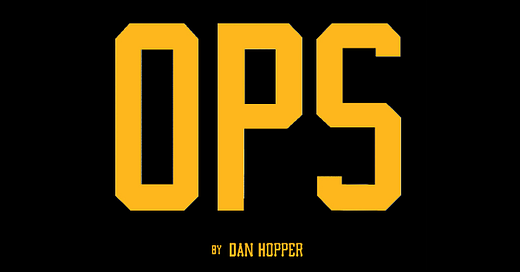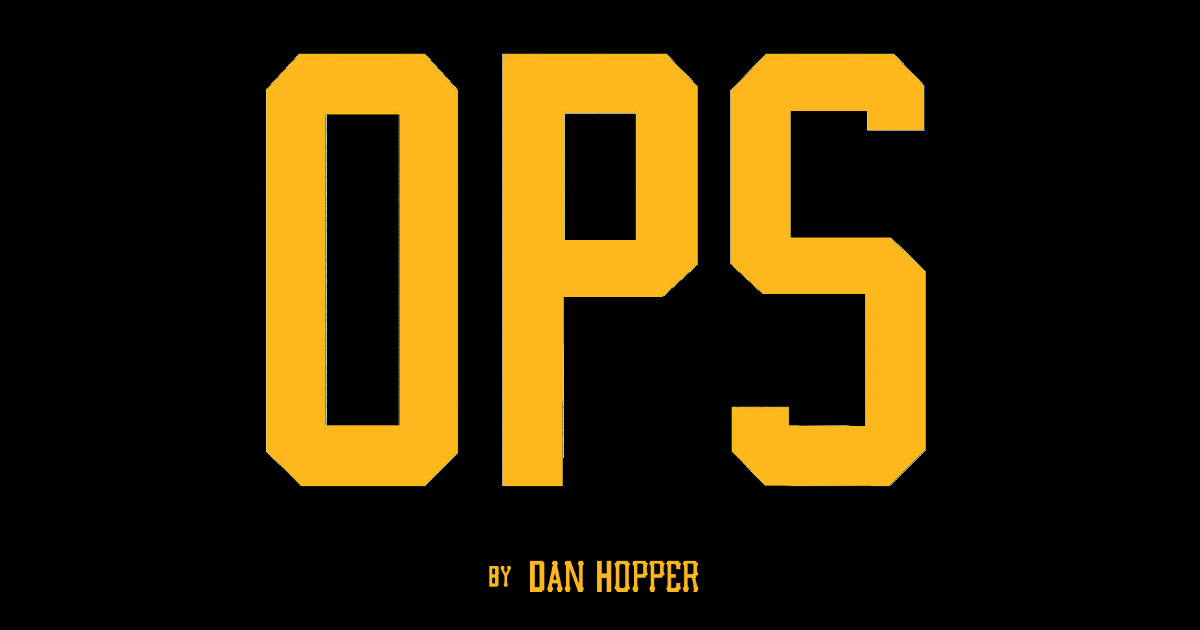Don't Expect *Too* Much From The Penguins' Rookies
The Pens finally have some interesting prospects - but let's not get ahead of ourselves.
The Penguins finally have their first moderately interesting group of prospects in years, and appear committed to a youth movement of sorts, spending the offseason acquiring draft capital and filling out the roster with short-term veterans who can easily be phased out for younger players as the season goes along.
I don’t want to call this strategy “long overdue,” because it’s not, really — they were a competitive team that kept going all-in and should have kept going all in for years while they were a true contender. But after two straight playoff misses and no clear “quick fix” path back to being a legit Cup threat, this is definitely a sensible path for the Pens to pursue.
Personally, I’m also really excited at the idea of watching some new young players get phased in over the next couple years, and to see what Dubas and his new Scouting Director Wes Clark and new Director Of Whatever The Rays Were Doing Jonathan Erlichmann can do with all that draft capital.
But in the midst of all this rightful enthusiasm around the team’s new direction, and with all the fan speculation about Rutger McGroarty playing on Crosby’s left wing or the clamoring for prospects like Vasily Ponomarev, Ville Koivunen, or Tristan Broz to earn bottom-6 roster spots over veterans like Anthony Beauvillier, Kevin Hayes, or Noel Acciari, we need to take a second to reflect on what are realistic expectations for the Penguins’ rookies over the coming season and beyond.
I don’t just want to throw a wet blanket on the prospect enthusiasm (again, I’m excited too and think they’re moving in the right direction), but it’s been SO long since the Penguins have “rebuilt” in any sense of the word, a lot of fans could use a dose of perspective when it comes to the reality of the Pens’ prospect situation. Here are two sobering facts that everyone should keep in mind throughout this season:
1. It takes NHL prospects a lot longer to become even average players, let alone great players, than prospects in some other sports.
2. Every other team in the NHL also has prospects, and most of their prospect groups are much better than the Penguins’ group.
Let’s tackle these sentiments one at a time. First: Realistic expectations for NHL rookies.
Last year, Reilly Smith and Rickard Rakell were two of the most maligned Pens forwards; Smith was reportedly unhappy with his trade from Vegas to Pittsburgh, and has been re-shipped to the Rangers with the Pens retaining part of his contract, and Rakell’s four remaining years on his contract loom ominously over the Pens’ mini-rebuild (thank you, Ron Hextall, Part 39.) Still, only three rookie forwards in the entire NHL had more points than Smith: Connor Bedard (a first overall pick phenom), Logan Cooley (a 3rd overall pick who played on Arizona’s top power play), and Marco Rossi (a 9th overall pick with 116 games of AHL experience.) Only four rookie forwards had more points than Rakell. As much as fans would like to see Rutger McGroarty in Pittsburgh as soon as possible, he’s a good but not elite prospect who hasn’t played a single AHL game; he’d have to produce at the rate of being one of the three best rookie forwards in the entire NHL from last year just to out-produce Reilly Smith, a “disinterested” veteran player who fans couldn’t wait to ship out of town.
This isn’t to say McGroarty shouldn’t eventually get a shot in the Pens’ top 6 this year, or that the growing pains of a young player’s first couple years in the league aren’t worth the potential payoff of them being more productive down the line. It’s simply to give a realistic perspective of what an uphill climb it is for unknown commodities who’ve never played in the world’s top hockey league to jump into the NHL and produce like your average, ordinary veteran top-6 forward.
In the NFL, any team can reasonably expect that their 1st and 2nd round picks in a given offseason will become productive regulars within a year or two, tops. If an NFL first round pick isn’t one of the team’s best players by the end of their first season, fans grow justifiably concerned. In MLB, most prospects take years to develop through a franchise’s various minor league affiliates, but once those players do graduate to the majors, they very often hit the ground running and are just as productive (if not more) than run-of-the-mill veterans.
None of this is the case in the NHL. Boring ol’ Kevin Hayes scored 54 points for Philly in 2022-23 — more than any rookie in the NHL besides Calder winner Matty Beniers — and got shipped off to St. Louis with half his salary retained. Obviously, just using “points” as a measure of effectiveness is a blunt tool, and a rookie coming into the league and being even moderately-productive on an entry level contract has its own unique value. This is just a gentle reminder that it will likely take multiple seasons for Rutger McGroarty or any of the Pens’ prospects to develop into as good of a player as decent veterans like Reilly Smith or Kevin Hayes.
Now, the second thing: Yes, the Pens have prospects, but so does every other team in the freaking league.
In August, The Athletic’s Corey Pronman ranked every NHL team’s prospect pools, counting their drafted prospects and their under-23 NHL players. The Penguins ranked 26th out of 32 teams, and dead last among Metropolitan Division clubs. Columbus was 4th, New Jersey 9th, Carolina 12th, Philadelphia 13th, the Rangers 15th, and the Islanders 25th. The Athletic’s Scott Wheeler also recently ranked the Top 100 Prospects in the NHL, listing only one Penguin (McGroarty at #33), and a tiered breakdown of the Top 150 NHL players and prospects under 23, on which again McGroarty is the only Penguin, listed in the 5th Tier of prospects (defined as “Someone who would offer strong support to a contending or championship core, but wouldn’t be an integral piece within it.”) The Devils have 5 players on the Under-23 list, the Hurricanes have 4, and the Rangers have 3. The Penguins don’t just lag behind completely-rebuilding teams like the Blackhawks, Sharks, and Ducks in terms of prospects — they have a weaker prospect pool than the other teams in their own division that are already currently better than they are.
Again, I don’t point this out to despair, or to suggest the Pens should’ve acted differently in their contending seasons, or to argue they aren’t moving in the right direction. It’s just sometimes easy for fans to get tunnel-visioned about their team’s own prospects and imagine some perfect scenario where McGroarty, Owen Pickering, Harrison Brunicke, and Tanner Howe all “hit” and grow into a new Penguins core while all the other teams around them stagnate. The Pens aren’t going to pass up the Rangers and Hurricanes by just passively “getting younger” — those teams will phase better young players into their already-better cores. Sure, some of the Pens’ less-heralded prospects might be better than expected — there’s reason for optimism around late-round Russian goalie prospect Sergei Murashov or 19-year-old KHL forward Mikhail Ilyin — but again, that’s also true of every other team in the league, most of whom have, on paper, have better prospects than the Pens do.
In the mid-2000s, the Penguins rebuilt semi-quickly by totally bottoming out at the exact time two mega-stars entered the draft, plus they drafted in the Top 2 two other times (Marc-Andre Fleury and Jordan Staal), and they had a small 3rd rounder (Kris Letang) blossom into a potential Hall-of-Famer. They supplemented the core over time when non-elite prospects like Jake Guentzel and Bryan Rust grew into way better players than anyone expected, partly through luck and good development, but partly through them being able to join an already-established elite core. Both of these circumstances were remarkably fortunate, and have possibly skewed fans’ perception about how hard a rebuild actually is, how long it takes for young players to make an impact in the NHL, and where the team’s current prospect pool actually stands compared to their peers.
The Pens’ top prospects should play the bulk of the year in key roles in Wilkes-Barre, with a possible injury-related callup here or there, then be phased in as regulars after the trade deadline. I expect the Pens to try to move as many veterans as possible at the deadline, and their lineup from March onward should be a de-facto audition / baptism-by-fire for their rookies getting their first taste of the league: McGroarty, Broz, Ponomarev, Koivunen, etc. They’ll add more draft capital at the deadline and (I believe) finish with a decent draft pick, and roll the “non-rebuild rebuild” into next offseason with a better idea of where their prospects stand and how they’ll fit into future lineups. If it takes some time, it’s not because Mike Sullivan “hates young players” (though he might - every NHL coach kind-of does), it’s because making the leap from prospect to NHL regular is extremely diffcult, and because while the Pens do have some prospects, they don’t have the elite groups that many other team do.
So when McGroarty isn’t on Crosby’s wing in October, don’t panic. And when they eventually call up McGroarty, and he scores in his debut, and everyone goes “WHY WASN’T HE UP HERE EARLIER,” then we quietly realize he has 1 goal in his next 18 games, don’t panic then either. It’s all part of a complicated, imperfect, time-consuming, and sometimes-frustrating process. We’ve just been fortunate enough in Pittsburgh to go two decades without having to experience it.



